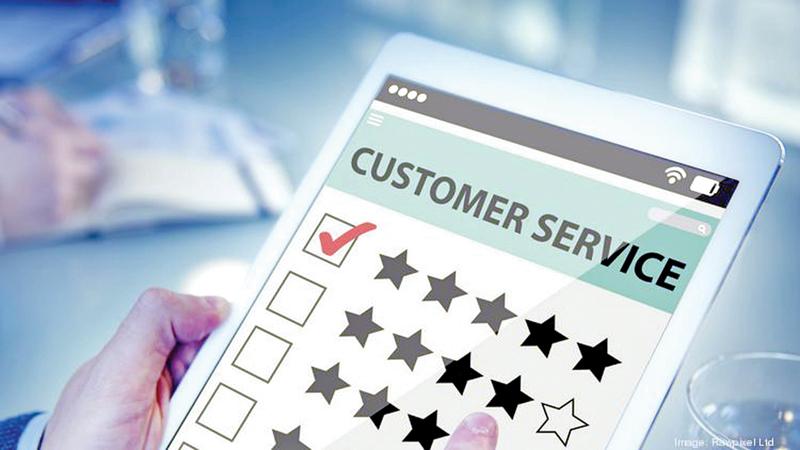
 Sometimes you worship your customers with the notion that the customer is the strongest pillar to your business. There is no doubt about it – whether it’s under the old theory or the new. But what if you have customers that make you a loss making business?
Sometimes you worship your customers with the notion that the customer is the strongest pillar to your business. There is no doubt about it – whether it’s under the old theory or the new. But what if you have customers that make you a loss making business?
Business is a two-way street. Customers should be as beneficial to you as you are to them. You get many types of customers at varying profit levels.
Over time, customers who are not as profitable wiggle their way into your business. How do we find out which customers are profitable and which are not. Evaluating your customers and how they impact your profitability is so critical to sustain a business.
Unprofitable customers? It doesn’t sound quite right, does it, an ‘unprofitable customer’. Can a buyer be called a customer unless you get a profit out of him? Surely, if someone signs up for your services or buys products from you, they are introducing profit into the business. Not necessarily, and this is one of the most frightening discoveries any business can make.
Chances are, you already have a number of unprofitable customers – you are just unaware of how unprofitable they are. The key lies in continually monitoring your customer base and looking for warning signs that something isn’t quite right. Because, if you don’t, the proverbial can get a lot worse.
Sniffing out unprofitable customers
Unprofitable customers are business killers and need to be removed before they cause bigger headaches and push you towards overall business losses. In any business you have ‘business guerillas’ under the disguise of ‘customer’. Smart organisations should not fall for these customers though they may give you big volume and revenue. What’s the purpose of having a big topline unless you have a decent bottom-line?
Profitability of a business depends on how profitably you can serve your customers. Not every revenue generating account is a strength. An organisation’s ability to calculate product, SKU, channel and customer wise profitability based on apportioned cost is a must to make every single customer a value creator.
Not all customers are alike. Some of them cost you money. The best way to avoid unprofitable customers is to actually not take them onboard. That’s where a good customer evaluation comes into play especially when it comes to large customers or channels. Retail customers can be grouped and profitability calculated as long as the product or service slate is the same.
If you do your homework well, you may end up with the conclusion that some customers, market segments and channels are less profitable. Higher acquisition costs, higher costs to serve, credit terms, return policy, working capital tied to serving that customer are all key contributors to the end game.
Get rid of unprofitable customers
Sometimes it’s impossible to avoid embarking unprofitable customers. And if the fraction of unprofitable customers is too large, you need to take action. Define strategies to abandon unprofitable customers.
There are several strategies available to fix the situation about the unprofitability of a customer. Offer lower service quality, less or no advantages. In short you create the conditions to dissatisfy unprofitable customers and hope they’ll leave.
State-of-the-relationship talks are useful to ensure the customer understands your position. Sometimes his unprofitability can just be the result of his misunderstanding of the “rules of the game”. When you’re trying to identify unprofitable customers, don’t look only at the obvious suspects. Also analyse your “loyal” customers. They may not be as profitable as you think. Loyal customers who know their value to you may exploit that knowledge to get premium service and discounts.
When the cost of serving them rises and the prices you charge them decrease, they become unprofitable. For customers who are very loyal but unprofitable, determine whether they have more money to spend. If so, offer them products related to those they have already purchased. Before you show the door to supposedly problematic customers, consider the “bottom feeder” pipeline strategy. Bottom feeders assess the needs of customers that other companies are shunning, and then develop a business model to turn a profit by fulfilling those needs.
Have you ever come across that one customer who you would do anything to get rid of? Have you ever questioned what to do with the customer that causes more strife than good? Whether they are a drain or merely a pain, these customers cost you money. So what do you do with unprofitable customers?
Let’s take a look at your numbers. Does your sales volume reflect the number of customers you spend your time with? More specifically, what are your ratios for the number of transactions, average sale per transaction and the gross margin you make? If your ratio is pretty high, and your margins are low, that’s a warning sign that it’s time to weed the garden.
Firing
Profitable customers have a huge impact on a company’s cash flow. Maintaining customer profitability means managing your costs and thus cash flow associated with that particular customer. First, you have to segment your total customers based on your servicing characteristics.
This looks at the number of transactions and the sales volume. You can then calculate the profitability of a customer by subtracting your estimated relative cost to service from the revenue for the various segments.
Conduct your customer profitability analysis to start eliminating customers that are costing you money, focusing on those customers that are profitable, and increase productivity in your organisation. But putting the math aside, you should probably look back on the patterns and relationships with those customers.
Are your customers rude and putting off certain payments citing various excuses? Are they a pain to deal with? Do they expect special treatment for a bargain price, unreasonable credit terms? Once you determine who your unprofitable customers are, you need to fire them. I know what you are thinking… “How do I fire someone that brings me money?!”
But that’s the problem. They make you lose money – so what is the purpose of making such customers happy? They are consuming resources you could dedicate to profitable customers, so they are actually costing you money and mortgage your business in the long run.
Firing those unprofitable customers opens up opportunities for your more profitable customers. You can spend more time, money, and effort on the people worth focusing on.
I like to conclude “A buyer is not a customer unless you have a net return – current or potential” – it’s like you doing a job that does not pay you.
